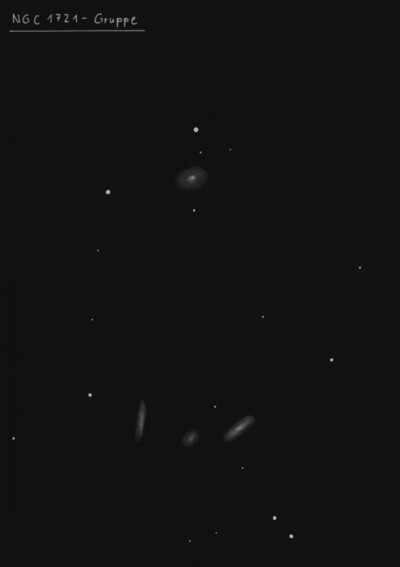
E.E. Barnard discovered NGC 1721, along with NGC 1725 and 1728, on 10 Nov 1885 with the 6-inch Cooke Refractor at Vanderbilt Observatory. In Sidereal Messenger, volume 5, he described "three small novae close together; difficult; rather faint, all three probably elongated north and south. A good many stars in field. It requires considerable power to make these nebulae out distinctly, a power of 120 on the 6-inch is about the lowest with which they can be seen.
Lewis Swift observed the trio (Sw. III-32, III-33 and III-34) a month later on 2 Dec 1885 after being notified by Barnard, but he mistakenly reported them as new again in his third discovery list, which was published in 1886! Barnard immediately responded in AN 2755 to claim prior discovery and document their correspondence. Swift acknowledged Barnard's prior discovery in the errata to his 5th list. Dreyer credited both Barnard and Swift in the NGC, despite Swift's mistae.
400/500mm - 17.5" (12/3/88): fairly faint, small, slightly elongated, broadly concentrated halo. A mag 14 star is off the NE side 1' from the center. In a close trio with NGC 1725 1.6' SE and NGC 1728 2.5' ESE. In addtion, NGC 1723 lies 8.5' NNE.
600/800mm - 24" (12/28/13): moderately to fairly bright, fairly small, high surface brightness, elongated 3:2 NW-SE, ~45"x30". Contains a small, bright irregular core. A mag 14 star is 0.8' NE of center. First in a close trio (KTS 28) with NGC 1725 and 1728.
Notes by Steve Gottlieb